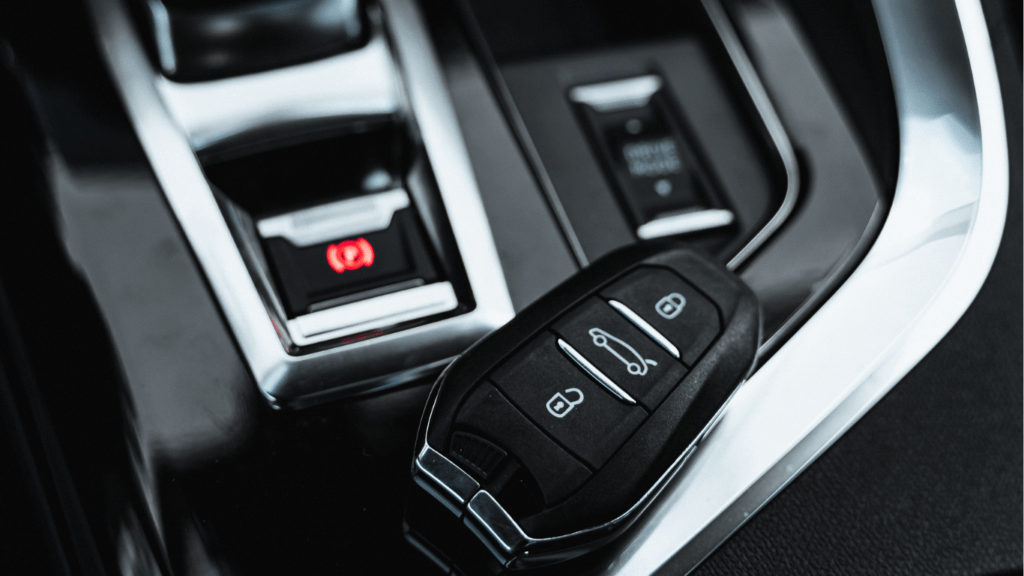Electric Vehicle Advancements
Major strides in electric vehicle (EV) technology are changing the landscape of the automotive industry. This year, several key advancements in EVs promise to make them more appealing and accessible.
Increased Range and Efficiency
Increased range and efficiency in EVs remain top priorities for manufacturers. Modern EVs often offer ranges surpassing 300 miles on a single charge, reducing the anxiety of running out of power. For instance, models like the Tesla Model S Long Range boast over 400 miles of range. Manufacturers are also exploring lighter materials and improved aerodynamics to enhance efficiency further.
Faster Charging Solutions
- Faster charging solutions are critical to widespread EV adoption.
- Many brands are developing ultra-fast charging networks, reducing the time needed to recharge batteries significantly.
- Charging stations, such as those from Electrify America, now offer speeds up to 350 kW, capable of providing an 80% charge in under 20 minutes.
- Integrating these fast chargers into more locations aims to make long-distance EV travel more convenient.
Autonomous Driving Technologies
This year, autonomous driving technologies are making significant strides. Several automakers are pushing the envelope to develop more advanced systems that aim to redefine the notion of self-driving cars.
Level 3 and Beyond Autonomous Systems
Several manufacturers are introducing or refining Level 3 autonomous systems. These systems can handle most driving tasks but require human intervention for certain conditions. For instance, Mercedes-Benz’s Drive Pilot can manage driving functions on highways up to 37 mph. Audi and BMW are also working on similar capabilities, aiming for features that allow for hands-free highway driving under specific circumstances. Progress in AI and machine learning enhances the ability of these systems to interpret complex traffic environments.
Improved Safety Features
Enhancements in autonomous driving technologies are driving the development of improved safety features. Newer models include advanced driver-assistance systems (ADAS) like automatic emergency braking and lane-keeping assist. Tesla’s Full Self-Driving (FSD) package, for example, integrates features such as Navigate on Autopilot, which automatically navigates on highways, exits, and merges. Safety becomes paramount as cars take on more driving responsibilities, with radar and LiDAR technology playing crucial roles in detecting and responding to obstacles.
Connectivity and Car-to-Everything (C-V2X)

Connectivity is transforming the driving experience through Car-to-Everything (C-V2X) innovations. These advancements aim to improve safety, efficiency, and overall enjoyment on the road.
Enhanced Infotainment Systems
Modern cars feature infotainment systems that provide seamless connectivity. Apple CarPlay and Android Auto allow drivers to access smartphone apps directly from the car’s interface. Systems like Tesla’s, which includes:
- streaming services
- web browsing
significantly enhance entertainment options on long drives. High-resolution touchscreens and voice control ensure easy navigation of menus, reducing driver distraction.
Real-Time Traffic and Safety Alerts
C-V2X technology enables cars to communicate with each other, traffic signals, and infrastructure. Vehicles equipped with this tech receive real-time updates on traffic conditions, such as accidents or congestion, helping drivers choose optimal routes. Systems like Audi’s Traffic Light Information service notify drivers of upcoming signal changes, improving traffic flow. Additionally, safety alerts, such as notifications about nearby emergency vehicles or pedestrians, enhance situational awareness and reduce accident risks.
Sustainable Materials and Manufacturing
Incorporating sustainable materials and manufacturing practices is becoming a priority in the automotive industry this year. The aim is to reduce the environmental impact without compromising on performance or safety.
Biodegradable and Recycled Components
Many car manufacturers are now using biodegradable materials and recycled components in their vehicles. For instance, some companies use recycled plastics for interior panels and carpeting. BMW’s i3 features natural fibers in its door panels and recycled plastic bottles in the seats’ fabric. Ford includes soybean-based foam in its seat cushions. These initiatives reduce waste and lower carbon footprints. By integrating more sustainable materials, carmakers are minimizing landfill contributions and promoting circular economies.
Energy-Efficient Production Processes
Energy-efficient production processes are gaining traction in automotive manufacturing. These processes focus on reducing energy consumption and minimizing emissions. For example, Tesla’s Gigafactories aim for high energy efficiency through the use of solar power. Toyota’s production plants employ energy-saving technologies like optimized heating and cooling systems. In addition, Volkswagen utilizes closed-loop recycling systems to reuse materials in its production lines. These practices enhance sustainability, cutting down on energy use and reducing greenhouse gas emissions.
Advanced Driver-Assistance Systems (ADAS)
Advanced driver-assistance systems (ADAS) continue to evolve, offering drivers a safer and more convenient driving experience. This year, several key areas within ADAS are seeing significant enhancements.
Enhanced Lane-Keeping and Adaptive Cruise Control
Enhanced lane-keeping assist helps drivers maintain their position within a lane using a combination of cameras and sensors. For example, Toyota’s Lane Tracing Assist uses cameras to detect lane lines and adjusts steering to keep vehicles centered. With advanced algorithms, these systems can now handle more complex lane markings and temporary road changes.
Adaptive cruise control automatically adjusts vehicle speed to maintain a safe distance from the vehicle in front. Systems like Audi’s adaptive cruise control combine radar and cameras to monitor traffic and adjust speed smoothly. This year, advancements focus on integrating these systems with real-time traffic data for more intelligent response to changing road conditions.
Emergency Braking and Blind Spot Detection
Emergency braking systems detect potential collisions and automatically apply the brakes to prevent or mitigate impact. For instance, Subaru’s EyeSight Driver Assist Technology uses stereo cameras to scan the road for obstacles. Innovations in AI and sensor technology improve the accuracy and speed of these systems, ensuring faster response times in critical situations.
Blind spot detection alerts drivers about vehicles in their blind spots, using sensors typically located in the rear bumper. Systems like Ford’s BLIS (Blind Spot Information System) include indicators in the side mirrors to notify drivers of approaching cars. This year sees improvements in detection range and precision, especially during high-speed highway driving and complex traffic scenarios.
Advanced ADAS features are enhancing car safety and convenience, making them essential in modern vehicles.
Innovative Interior Designs
Automakers are revolutionizing vehicle interiors this year with cutting-edge technology and thoughtful design choices. These innovations significantly enhance driving comfort and convenience.
Augmented Reality Dashboards
Augmented reality (AR) dashboards are becoming more common in modern vehicles. This technology overlays essential information on the windshield, allowing drivers to access navigation, speed, and safety alerts without taking their eyes off the road. For instance, BMW’s AR dashboard projects real-time navigation cues directly onto the driver’s line of sight. Mercedes-Benz’s MBUX Hyperscreen uses AR to provide an interactive, intuitive interface that spans the entire dashboard. This integration increases situational awareness and reduces distraction, making driving safer and more efficient.
Customizable and Smart Seats
Comfort and personalization are key with the latest innovations in seat design. Smart seats adjust automatically based on the driver’s body type and preferences, offering an optimal seating position. For example, Cadillac’s seats feature massage functions, heating, and cooling, all customizable via the infotainment system. Tesla’s Model S provides custom user profiles that remember seat settings, making transitions seamless between different drivers. These advancements contribute to a more comfortable and personalized driving experience, ensuring long journeys are less tiring.




